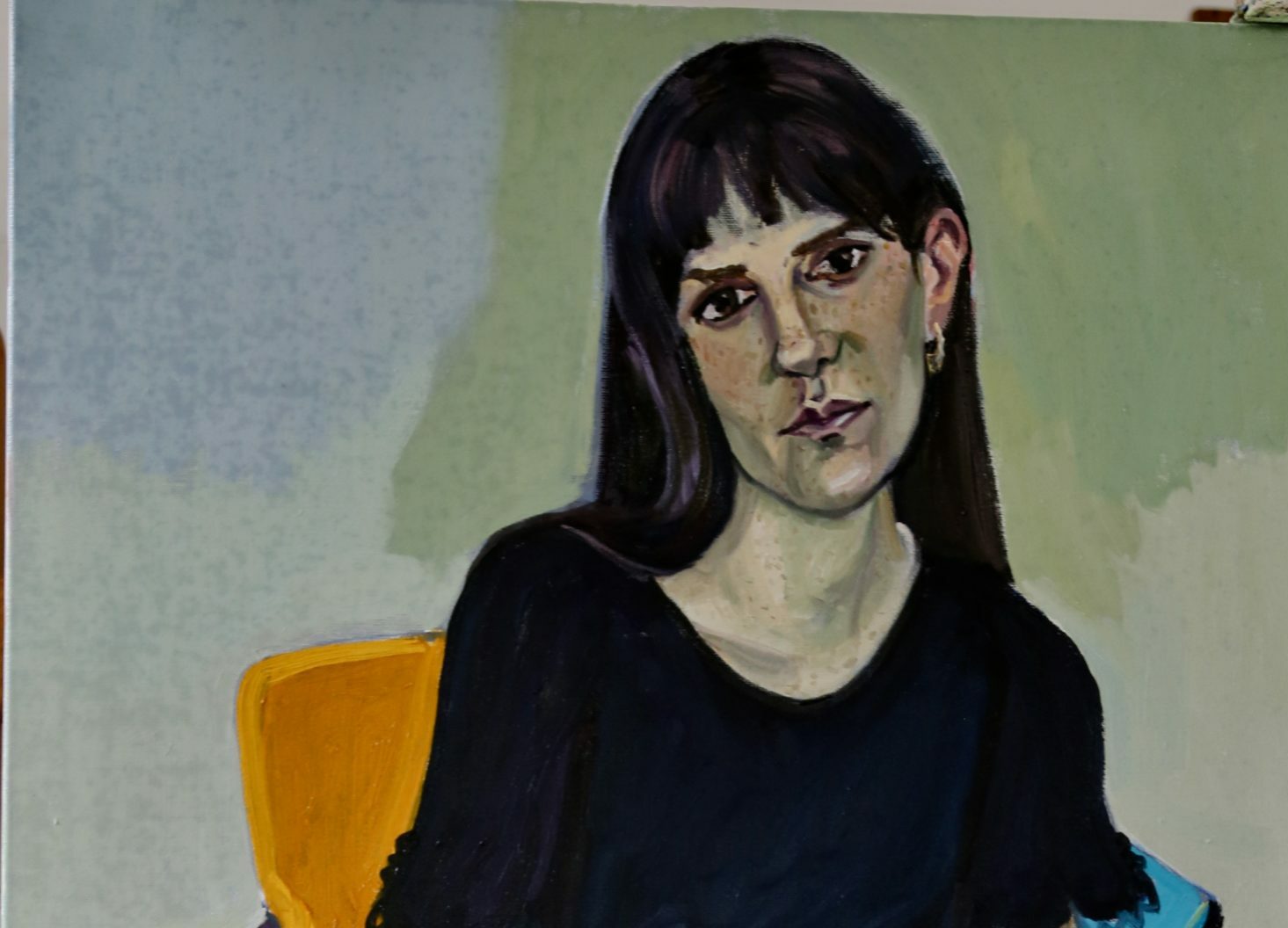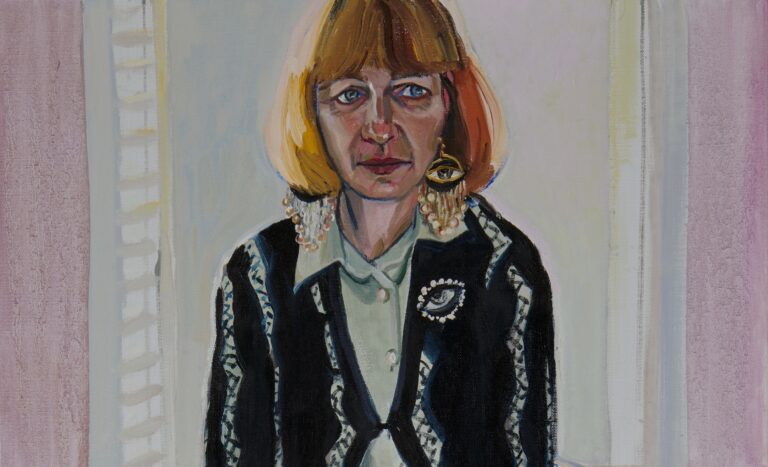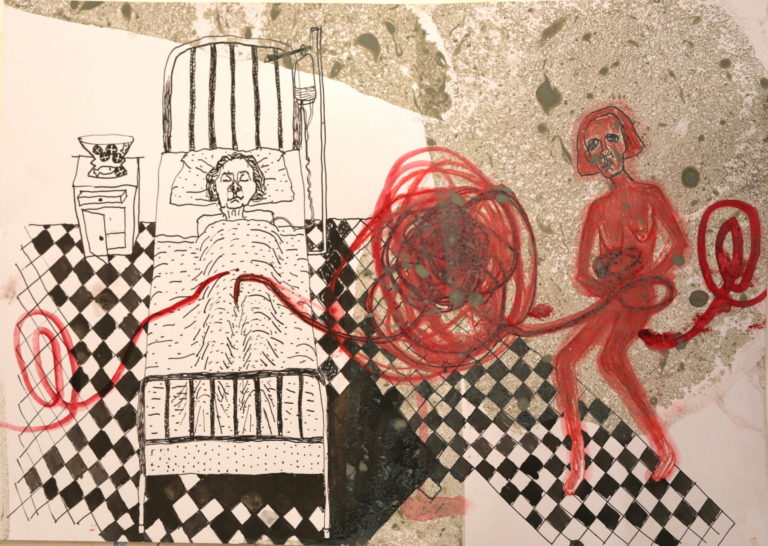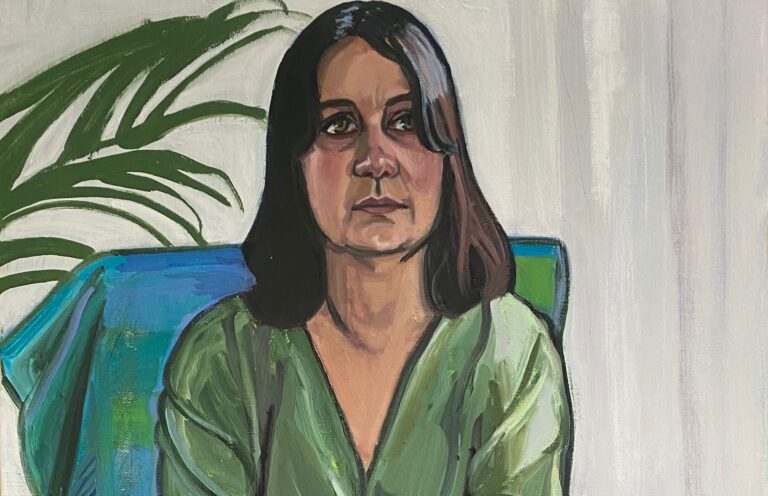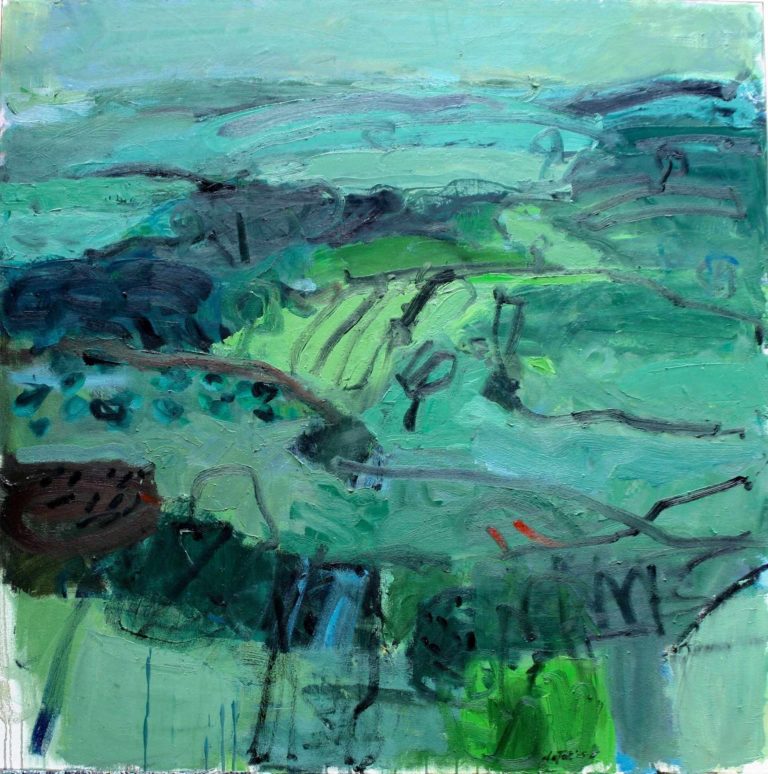One of the first authors who agreed to sit for me was Katy Norris, an art historian studying the links between female artists and reform movements in early 20th century Britain. Painting Katy turned out to be an unusually moving experience. I had a premonition of this during our first email exchange, where she told me her son Robin had a severe neuro-muscular condition and may need attention during the sitting.
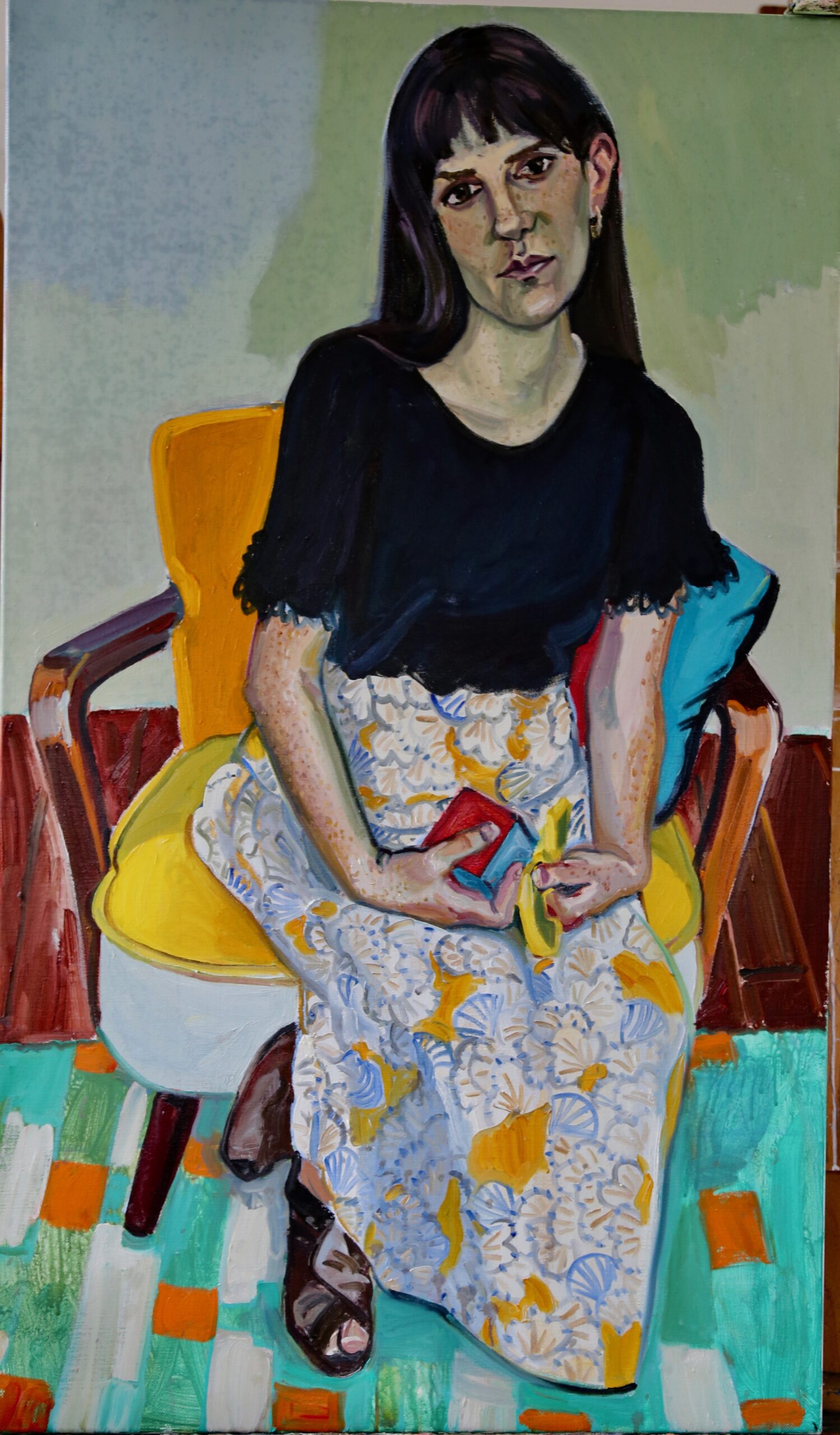
I set out to meet her on a bright day in early June, my heart skipping a beat as I took the turning towards Ovingdean and saw the sea glimmering ahead of me. The neighbourhood where I arrived was new-built, the sun dancing across the gravel and rockeries, plants and shrubs. I felt the unmistakable atmosphere of a seaside town.
Katy has thick black hair and big brown eyes like lychee stones, a petite frame and wonderful freckles. Her partner was on the way out with their son Robin, and I got some sense of the special care he needed from the presence of his medical equipment in the house.
We had a long conversation about the unexpected direction her life had taken, and how we might represent her dedication to her child. I could not help feeling inspired by her energy and openness. We decided to include some objects a close friend had made for Robin: a brightly coloured cube and a figure of two. As Katy sat down in her yellow chair, I was already looking forward to painting her long patterned skirt. She asked what I was going to do about her freckles, and I said paint them of course.
This was an interesting portrait in terms of body language and facial expression. Sitters often start out with a pose that does not feel relaxed, but after talking for a while, they might settle unconsciously into a more comfortable position, which comes through in the natural rhythm of the hands, feet and head. Once relaxed, sitters tend to adopt a direct outward gaze, which can say a lot about their character, whether it be confident, defiant, romantic, reflective, suspicious, self-conscious, warm, timid, playful, serious or sad.
Katy did not follow the usual sequence. She has, as she told me herself, a permanent tension in her. I felt my best drawing was actually one where she was looking down, since her body language was less rigid, with her curled-up feet balancing the slight tilt of her head. But after the sitting, Katy emailed to say she would prefer to be painted looking up and meeting the viewer’s gaze. Since she was holding Robin’s toys in her hands, she wanted the portrait to convey her positivity and determination in embracing the challenges she faced.
This decision took on a new significance when, in the months between our first and second sittings, Robin passed away. I asked Katy if she wanted to change any details of the portrait, but she chose not to. Robin had a wonderful life, full of love and happiness, and Katy and her partner wanted to preserve that memory.
It was January when she came for the second sitting. I got up early to switch the heaters on, the frozen ground crunching underfoot as I walked out to the studio. A grey, arctic-cold day. I glanced at my garden, ravished by winter: the frostbitten agarve that would not make it to spring, the beautiful frosted edges on the bitter cress, the foxglove leaves now covered in an icy white coat.
I placed the chair to the right of my easel, checking the angle at which I needed Katy to sit. Everything was ready. Fresh thinners in a little tin bucket, to rinse my brushes while I paint, and linseed oil in an old yoghurt pot. A clean rag stuffed under the canvas for wiping the brushes, a few palette knives ready for scraping. Then I squeezed out the paints: among them amethyst, indigo, sap green, raw sienna, alizarin crimson and cadmium orange.
I do not work with a limited palette, nor do I use formulas for mixing paints. I find it too thrilling when I unexpectedly discover a new colour, which often happens when I have no idea how to arrive at the colour I want. The best days are when I feel colour – there is no other way to say it. At these moments I am not confined by what I see in front of me; I can follow my intuition towards something more ambitious.
The sitting went well. I did not want a photographic likeness of Katy; I wanted to exaggerate her big brown eyes and freckles. I tried to keep my style fresh and quick, to avoid the painting looking over-worked. I kept painting after Katy left, but by three-thirty the winter dusk was descending. The next morning I was impatient to continue, but now the painting seemed already finished.
I always try to remember Robert Henry’s dictum: “Completion does not depend on material representation. The work is done when that special thing has been said.” But whatever I managed to say with Katy’s portrait, it will never do justice to her bravery in such difficult times.
